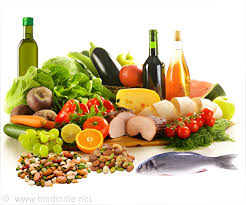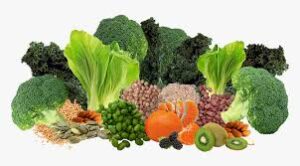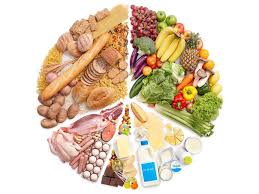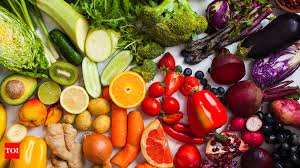Ensuring children receive the proper nutrition is one of the most vital aspects of parenting. During their formative years, children require balanced diets rich in nutrients to support their growth, cognitive development, and energy needs. With childhood obesity and other diet-related health issues on the rise, it has become even more critical for parents to adopt healthy eating patterns for their kids. This article introduces Best five healthy diets for kids tailored to meet children’s nutritional needs while promoting long-term well-being.
1. The Balanced Plate Diet

The balanced plate diet is a simple yet effective approach to healthy protein diets for kids. It emphasizes the importance of variety and moderation, ensuring children consume all essential food groups in appropriate proportions.
Key Components:
Fruits and Vegetables: Aim for half the plate to be filled with colorful fruits and vegetables. They provide essential vitamins, minerals, and fiber.
Whole Grains: Incorporate whole grains like brown rice, quinoa, whole-wheat bread, or oatmeal to supply sustained energy.
Protein: Lean protein sources such as chicken, fish, eggs, beans, and nuts should occupy a quarter of the plate.
Dairy: Include a serving of low-fat milk, yogurt, or cheese to ensure adequate calcium intake.
Healthy Fats: Use healthy fats like avocado, olive oil, and nuts in moderation.
This diet helps children develop healthy eating habits and exposes them to a variety of foods, which can prevent picky eating behaviors.
2. The Mediterranean Diet

Known for its heart-health benefits, the Mediterranean diet is an excellent choice for children. It is inspired by the traditional eating habits of countries bordering the Mediterranean Sea.
Key Components:
Fruits and Vegetables: A significant portion of the diet includes fresh fruits and vegetables, ensuring ample antioxidants and nutrients.
Whole Grains: Whole-grain bread, pasta, and cereals form the base of many meals.
Healthy Proteins: Lean proteins such as fish, chicken, and plant-based options like legumes and nuts are preferred.
Healthy Fats: Olive oil is the primary source of fat, promoting heart health.
Dairy and Eggs: Moderate consumption of dairy and eggs supports calcium and protein needs.
Limited Red Meat and Sweets: Red meat and sugary treats are consumed sparingly.
The Mediterranean diet not only supports physical health but also encourages family meals and mindful eating, promoting a positive relationship with food.
3. The Plant-Based Diet

A plant-based nutrition diets for kids focuses on foods derived from plants while minimizing or eliminating animal products. It’s an excellent way to introduce kids to a diverse range of nutrient-dense foods.
Key Components:
Fruits and Vegetables: These are the staples of the diet, providing essential vitamins, minerals, and antioxidants.
Whole Grains: Quinoa, barley, millet, and whole-grain bread offer fiber and sustained energy.
Legumes and Nuts: Lentils, chickpeas, almonds, and walnuts are rich in protein and healthy fats.
Fortified Plant-Based Alternatives: Fortified plant-based milks and cereals ensure adequate intake of calcium, vitamin D, and B12.
Minimized Processed Foods: Whole, unprocessed foods are prioritized over packaged and processed items.
Parents adopting this diet should consult a pediatrician or dietitian to ensure their children receive all necessary nutrients, such as vitamin B12 and iron, which might be limited in a strictly plant-based regimen.
4. The DASH Diet

Originally designed to prevent hypertension in adults, the DASH (Dietary Approaches to Stop Hypertension) diet is also highly beneficial for children. It emphasizes balanced eating and limits sodium intake.
Key Components:
Fruits and Vegetables: These form the foundation of the diet, providing fiber, potassium, and essential nutrients.
Whole Grains: Brown rice, whole-wheat pasta, and whole-grain cereals are staples.
Lean Proteins: Skinless poultry, fish, beans, and nuts are the primary protein sources.
Low-Fat Dairy: Milk, yogurt, and cheese contribute calcium and vitamin D.
Limited Sodium: Processed and salty foods are restricted to maintain optimal sodium levels.
Healthy Fats: Emphasis is placed on unsaturated fats, such as those found in avocados, olive oil, and seeds.
The DASH diet helps maintain a healthy weight and supports overall cardiovascular health. It is particularly suitable for kids with a family history of heart disease or high blood pressure.
5. The Rainbow Diet

The rainbow diets for kids encourages children to “eat the rainbow,” focusing on a wide variety of colorful fruits and vegetables. Each color group offers unique health benefits.
Key Components:
Red Foods: Tomatoes, strawberries, and red peppers are rich in antioxidants like lycopene.
Orange and Yellow Foods: Carrots, oranges, and sweet potatoes provide beta-carotene and vitamin C.
Green Foods: Spinach, broccoli, and kiwi are packed with vitamins, minerals, and fiber.
Blue and Purple Foods: Blueberries, eggplant, and plums are high in anthocyanins, which support brain health.
White Foods: Cauliflower, garlic, and bananas offer nutrients like potassium and flavonoids.
This diet not only ensures comprehensive nutrition but also makes meals visually appealing, encouraging kids to try new foods.
Final Thoughts
Choosing a healthy diet for kids involves more than just providing nutritious food; it also includes fostering positive eating habits and creating a supportive mealtime environment. By incorporating any of these five diets, parents can set their children on a path toward a lifetime of good health. Each diet offers unique benefits, and parents can adapt them based on their child’s preferences, dietary restrictions, and health needs. With the right guidance, kids can enjoy delicious, balanced meals that fuel their growth and development.